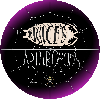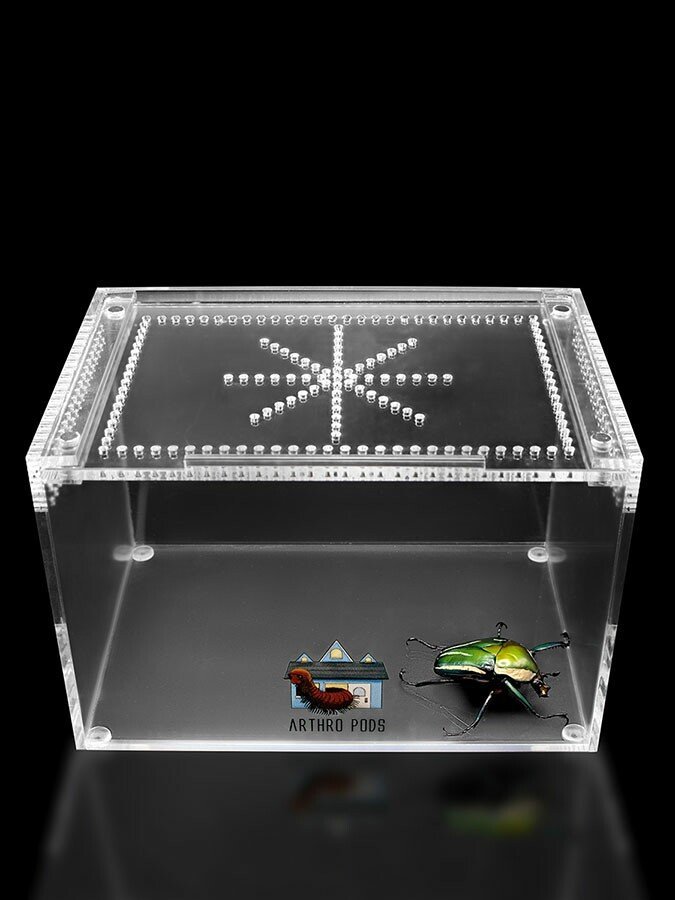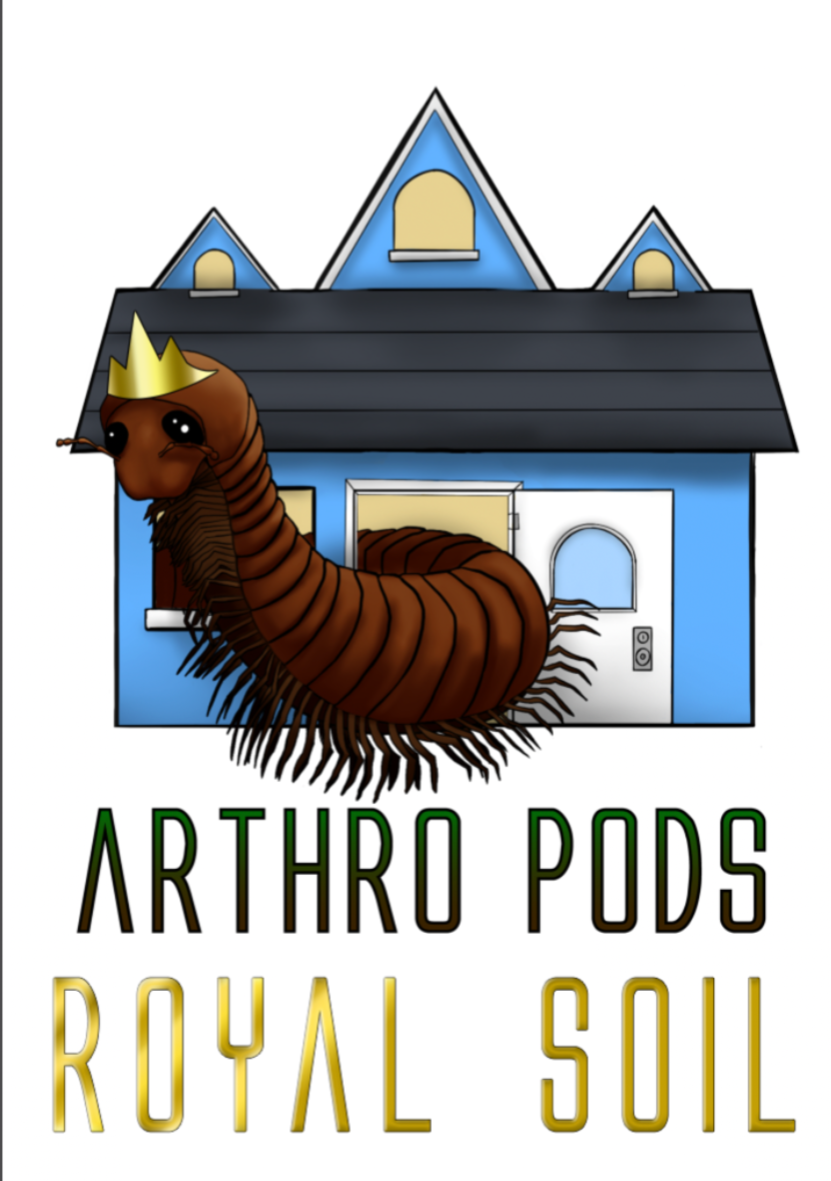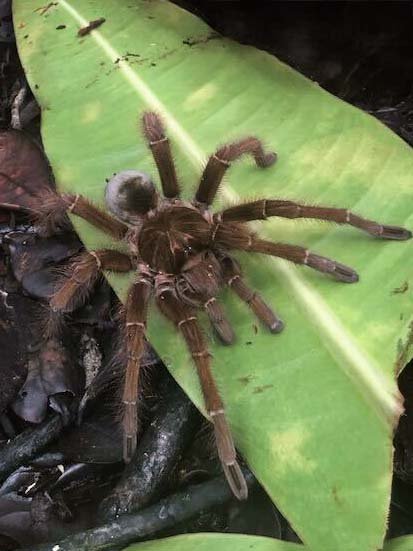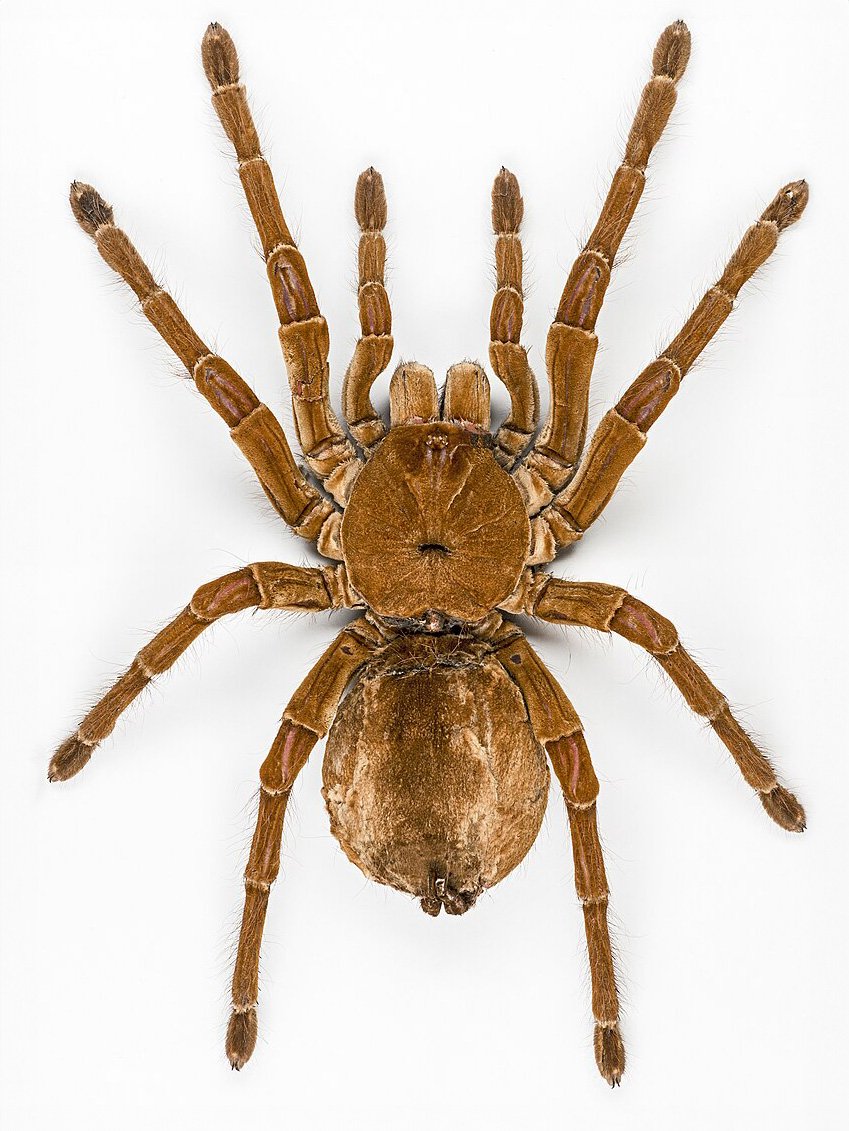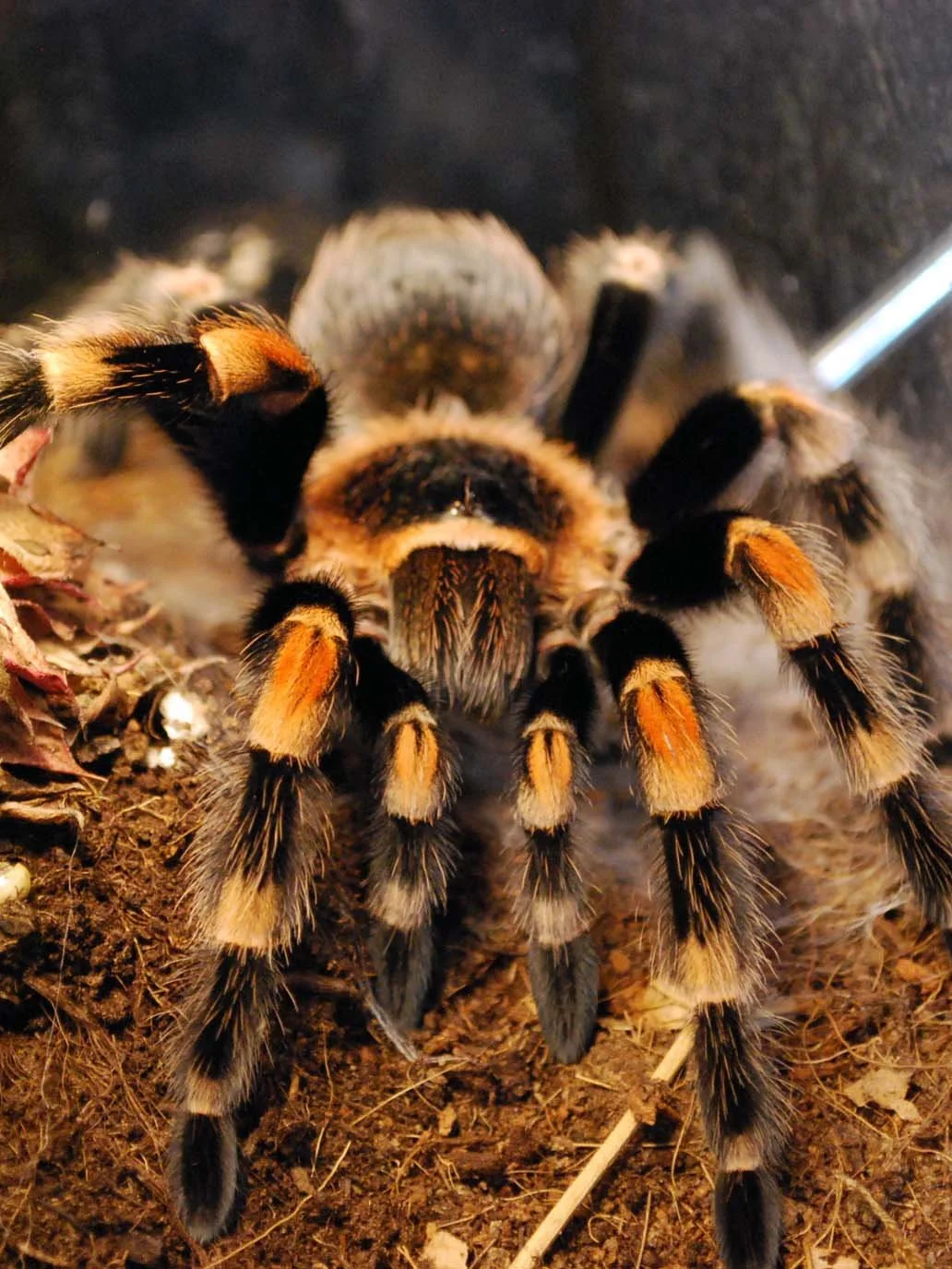 Image 1 of 3
Image 1 of 3

 Image 2 of 3
Image 2 of 3

 Image 3 of 3
Image 3 of 3




Brachypelma hamorii
Looking for an exotic and fascinating pet? Look no further than the Brachypelma hamorii tarantula! Also known as the Mexican Red Knee Tarantula, this species is known for its striking appearance with a black body and bright orange-red stripes on its legs. Commonly considered a novice tarantula, their skittish nature makes them more of a one or two previously Tarantula-owned pet. Their desire to kick hair is matched only by their stunning beauty.
Looking for an exotic and fascinating pet? Look no further than the Brachypelma hamorii tarantula! Also known as the Mexican Red Knee Tarantula, this species is known for its striking appearance with a black body and bright orange-red stripes on its legs. Commonly considered a novice tarantula, their skittish nature makes them more of a one or two previously Tarantula-owned pet. Their desire to kick hair is matched only by their stunning beauty.
Looking for an exotic and fascinating pet? Look no further than the Brachypelma hamorii tarantula! Also known as the Mexican Red Knee Tarantula, this species is known for its striking appearance with a black body and bright orange-red stripes on its legs. Commonly considered a novice tarantula, their skittish nature makes them more of a one or two previously Tarantula-owned pet. Their desire to kick hair is matched only by their stunning beauty.
What’s the ideal diet for a Mexican Red Knee Tarantula?
All Tarantulas can eat a variety of feeders. We recommend crickets, dubia roaches, silkworms, horned worms occasionally, and a superworm or mealworm as the occasional treat!
How should I keep a Mexican Red Knee Tarantula?
We recommend starting with a small Terrestrial Terrain enclosure if under a ¼” - 1.2” Spiderling (sling). When they are about 1” in size, you’ll want to upgrade to a medium or large Terrestrial Terrain enclosure. Feed them as slings once a week, twice if their opisthosoma (abdomen) looks small, but if the opisthosoma is wider than their prosoma (pneumothorax), then wait a couple of days to feed. For juveniles or adults, stick to feeding once a week, nothing larger than their opisthosoma. Make sure to keep a full water dish at all times; wider and deeper is fine. Your Tarantula can’t drown; they float on water.
How long could a Mexican Red Knee Tarantula live?
Brachypelma hamorii females are believed to live upwards of 25-30 years, while males live around only five years. These are the best estimates from multiple sources.
Some photos provided by iNaturalist, credit to:
Alan Rockefeller, some rights reserved (CC BY)
Thomas Oswald, some rights reserved (CC BY)
Igor Balashov, some rights reserved (CC BY)

